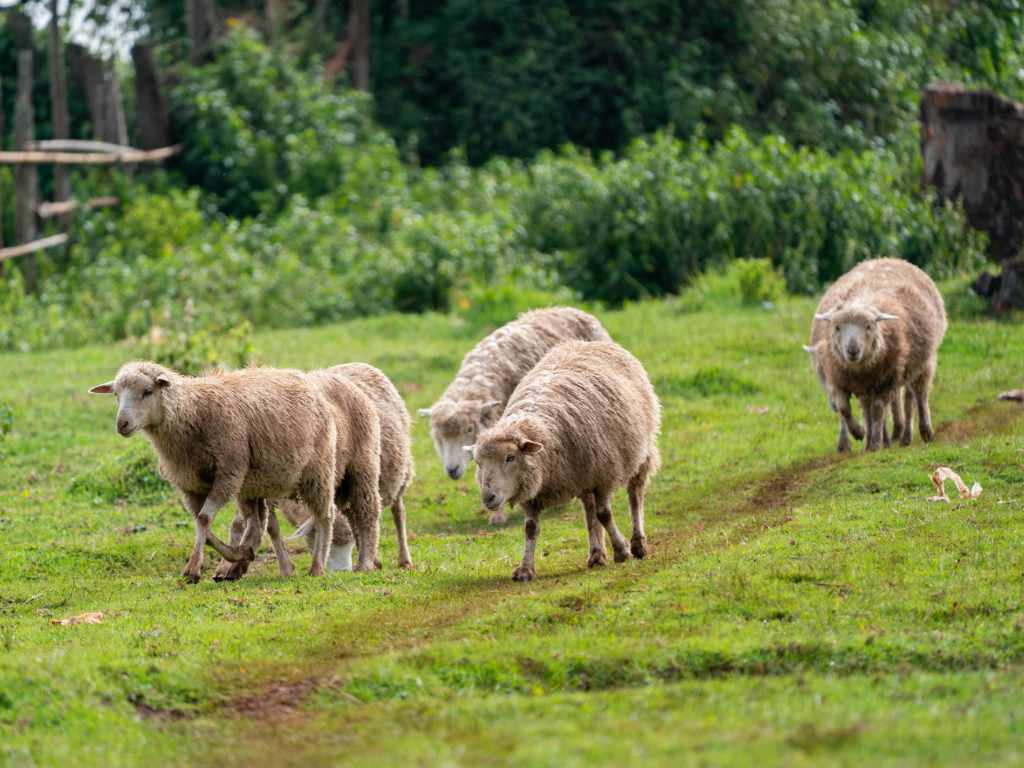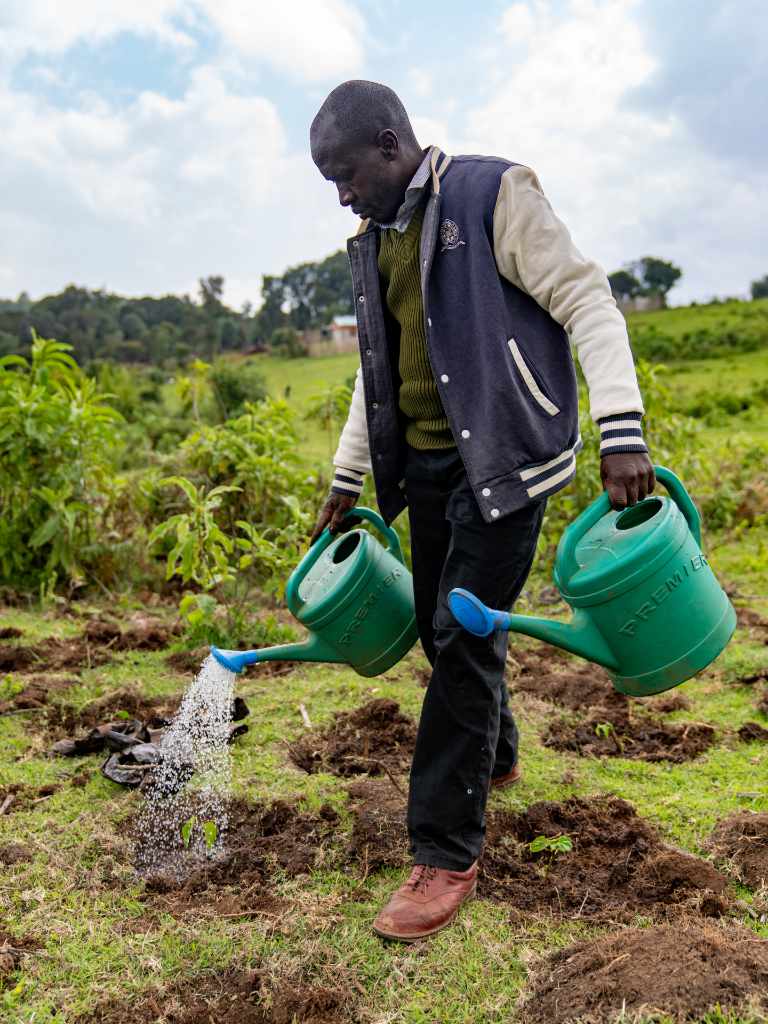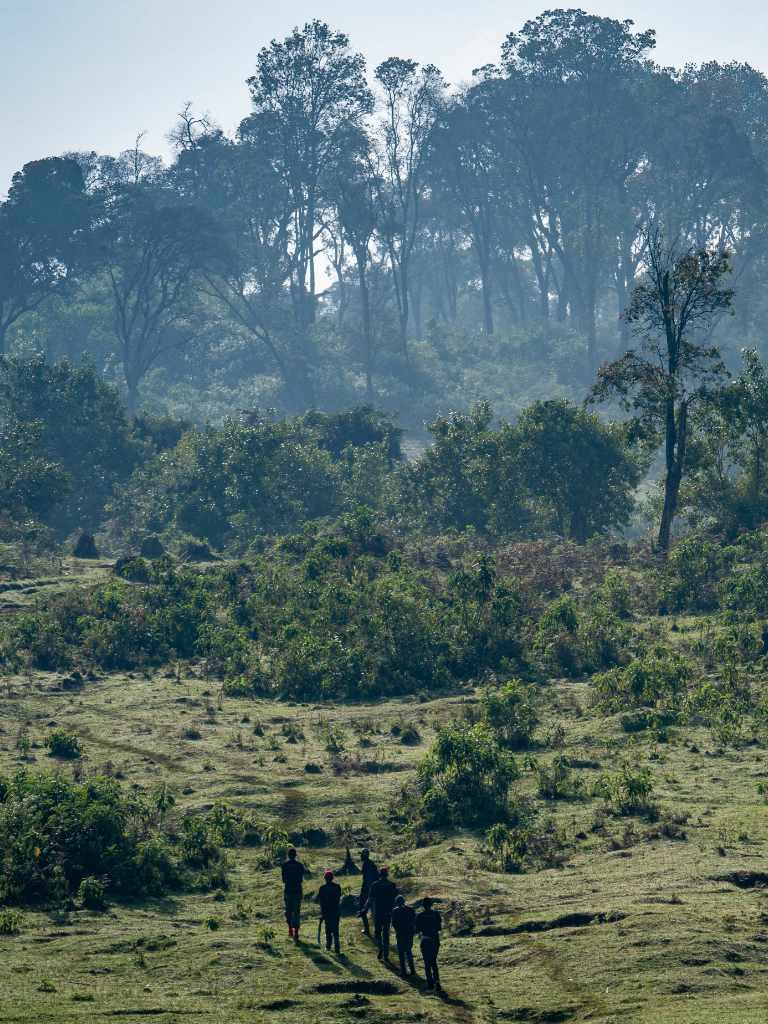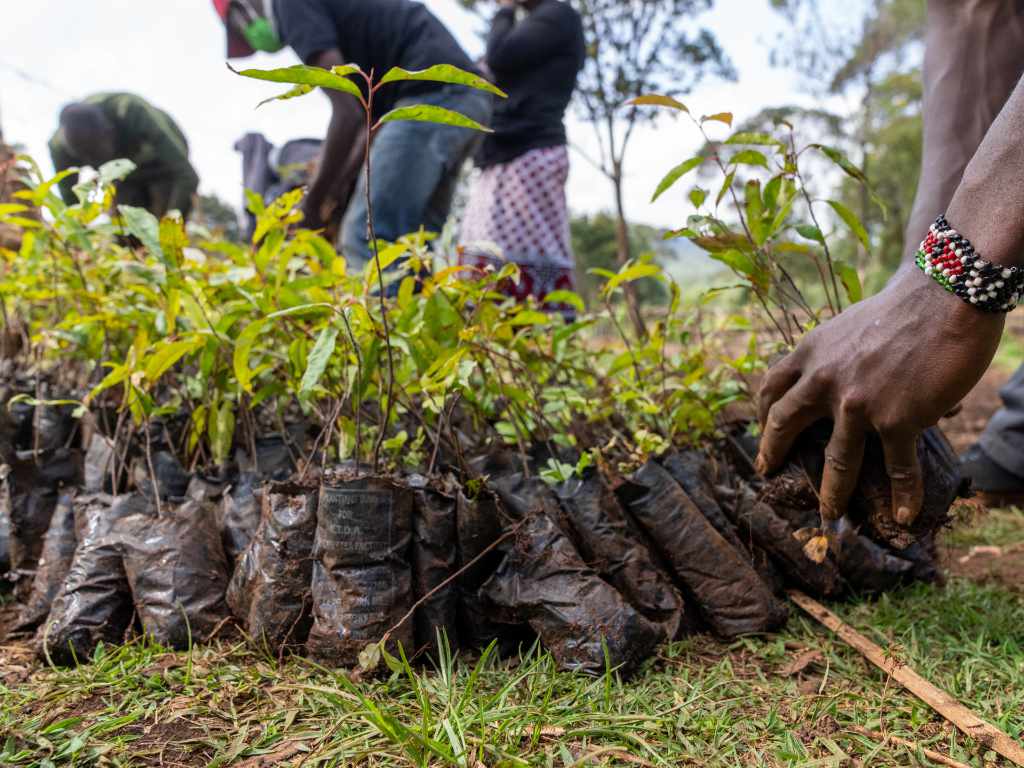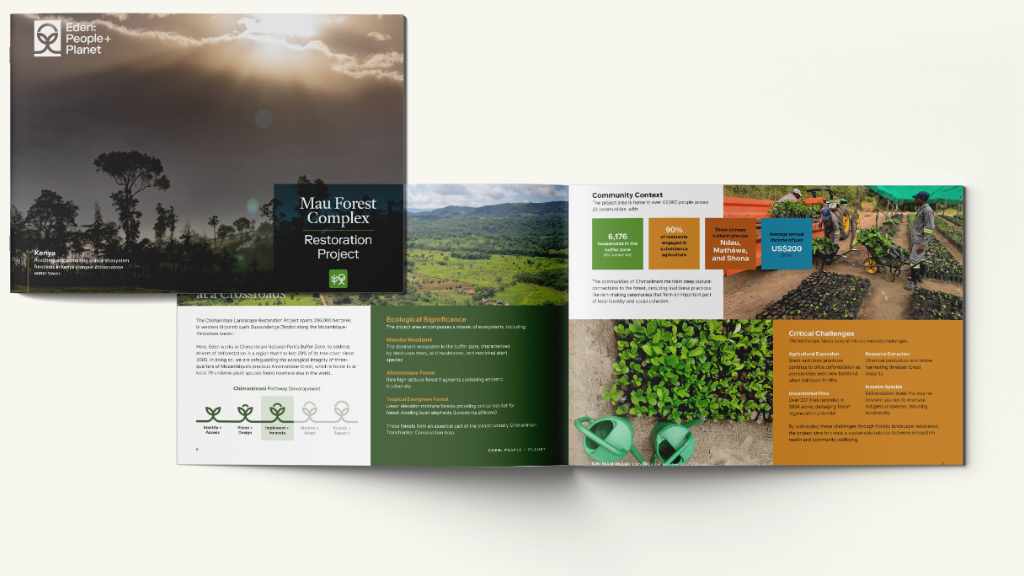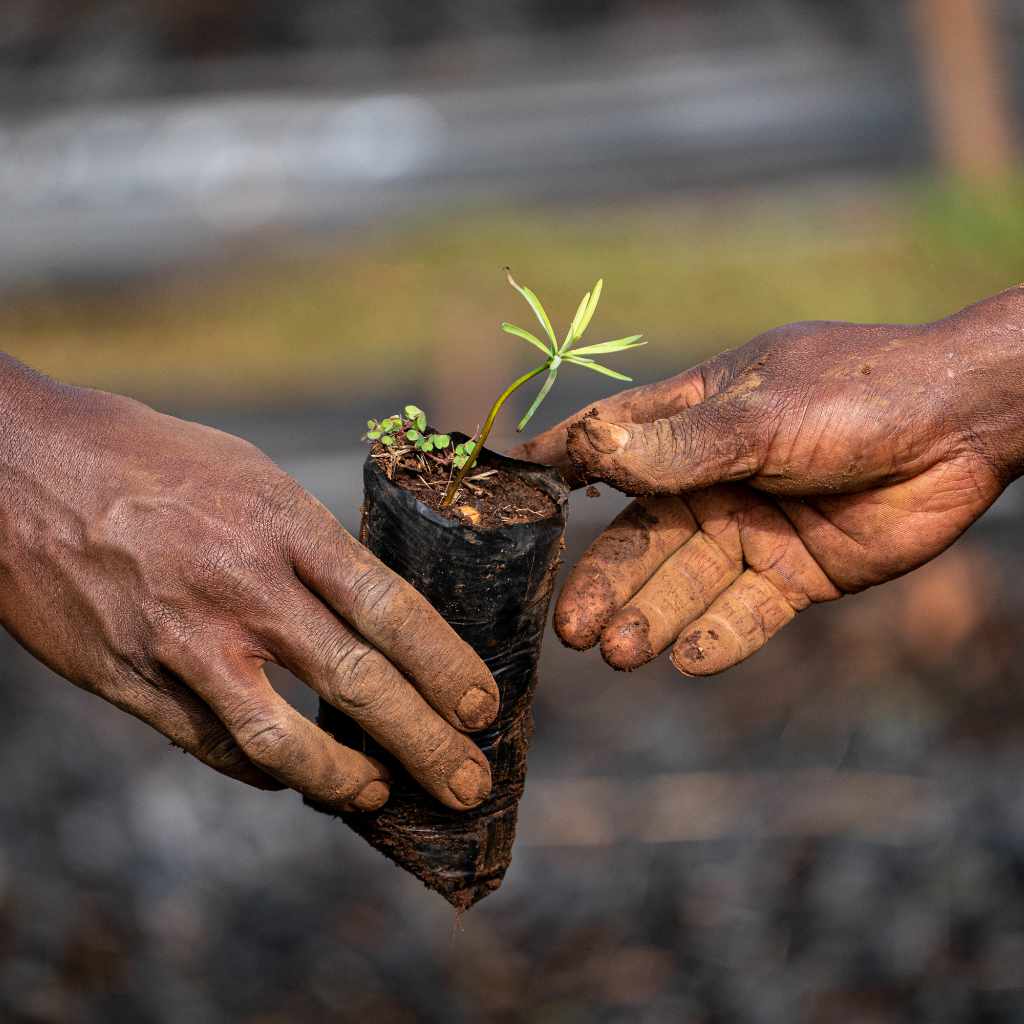
Our Projects
Mau Forest Complex Restoration Project
Project Overview
The Mau Forest Complex, Kenya’s largest closed canopy forest spanning 370,000 hectares in the Great Rift Valley, served as a pioneering landscape restoration project for Eden from 2020-2024. This vital ecosystem functions as Kenya’s most significant water tower, feeding 13 major rivers that sustain over 5 million people.
During implementation, Eden successfully established four nurseries with 4.8M trees/year capacity, developed stakeholder coordination frameworks, and demonstrated effective restoration techniques in this Afromontane landscape. Despite the project’s closure as part of Eden’s strategic shift to carbon-eligible projects, our work created valuable foundations for future carbon project development.
The experience gained in the Mau—coordinating multiple government agencies, engaging Community Forest Associations, and implementing large-scale restoration in a complex landscape that lost 18% forest cover between 2001-2023—continues to inform Eden’s approach to carbon-eligible landscape restoration globally.
Ecosystem
The Mau Forest Complex represented a significant milestone in Eden’s evolution toward carbon-eligible landscape restoration. As Kenya’s largest closed canopy forest spanning 370,000 hectares, this Afromontane ecosystem served as the primary source for 13 major rivers and the vital Mara-Serengeti watershed.
From 2020-2024, Eden’s work demonstrated effective approaches to large-scale forest restoration, establishing four nurseries with 4.8M trees/year capacity and developing strong partnerships with Community Forest Associations. The landscape supported critical biodiversity, including forest-dwelling elephants, the endangered mountain bongo, and over 130 bird species.
While implementation has concluded as part of Eden’s strategic shift, the project yielded valuable insights for carbon project development, including stakeholder coordination frameworks, restoration methodologies, and community engagement strategies that continue to inform Eden’s carbon-eligible landscape initiatives across Africa.
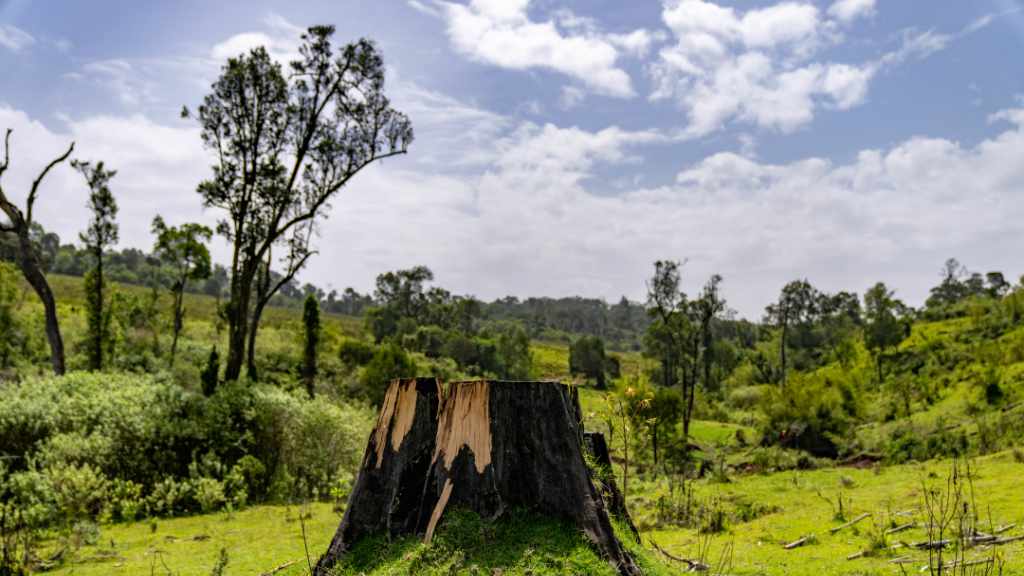
| Stat Label | Stat Value |
|---|---|
| Forest Area | 370,000 hectares of Afromontane forest ecosystem |
| Community Impact | 168 seasonal restoration team members employed |
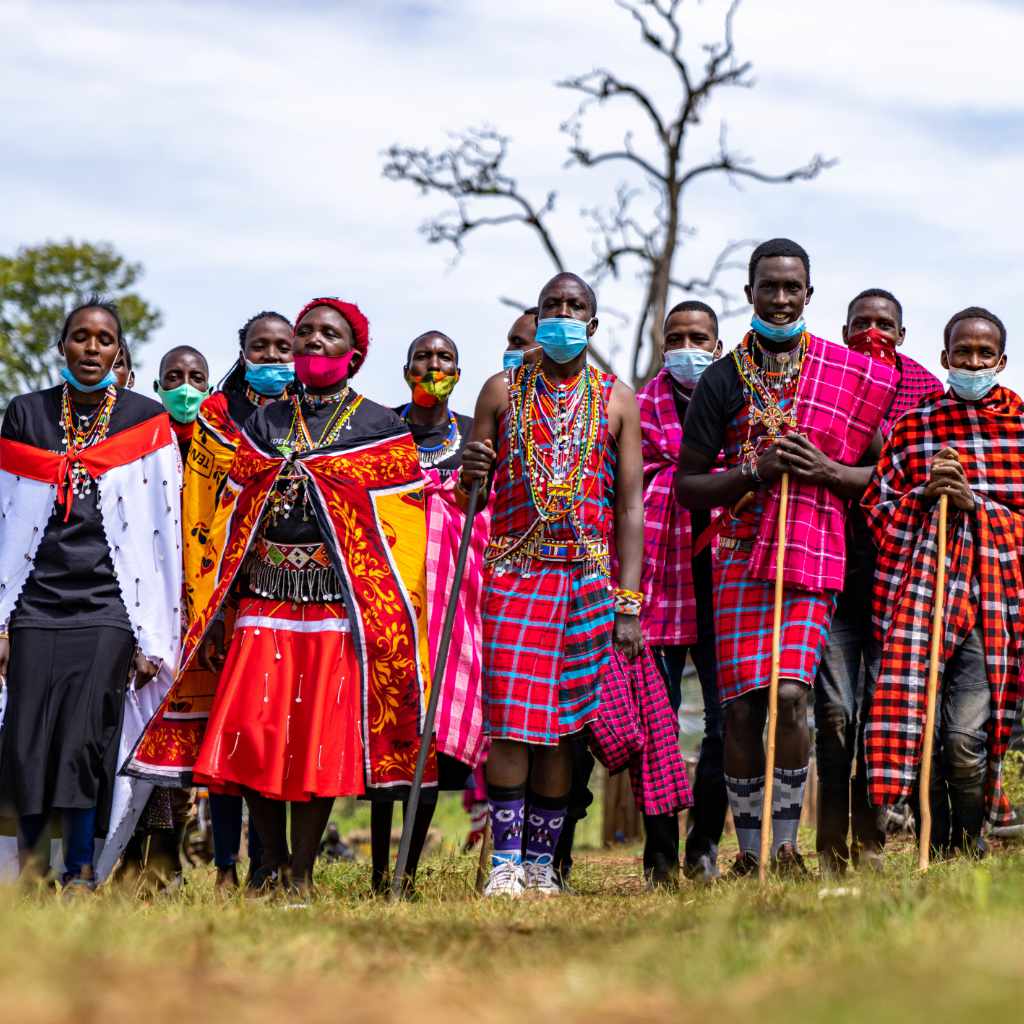
Community
During implementation from 2020-2024, the Mau Forest Complex project demonstrated the critical intersection of ecosystem services and community welfare, serving over 5 million people who depended on its water resources while supporting major agricultural regions and tourism opportunities connected to the Mara-Serengeti ecosystem.
Local communities maintained deep cultural connections through traditional management practices and sacred sites, engaging through Community Forest Associations (CFAs) that played crucial roles in forest management and conservation efforts. Eden’s approach centered on building strong partnerships with these CFAs and aligning multiple stakeholders including Kenya Forest Service, Kenya Water Towers Agency, and Kenya Wildlife Service.
This historic work established valuable frameworks for community engagement and stakeholder coordination that continue to inform Eden’s carbon-eligible landscape restoration projects, demonstrating effective methods for balancing ecological recovery with community development and cultural heritage preservation.
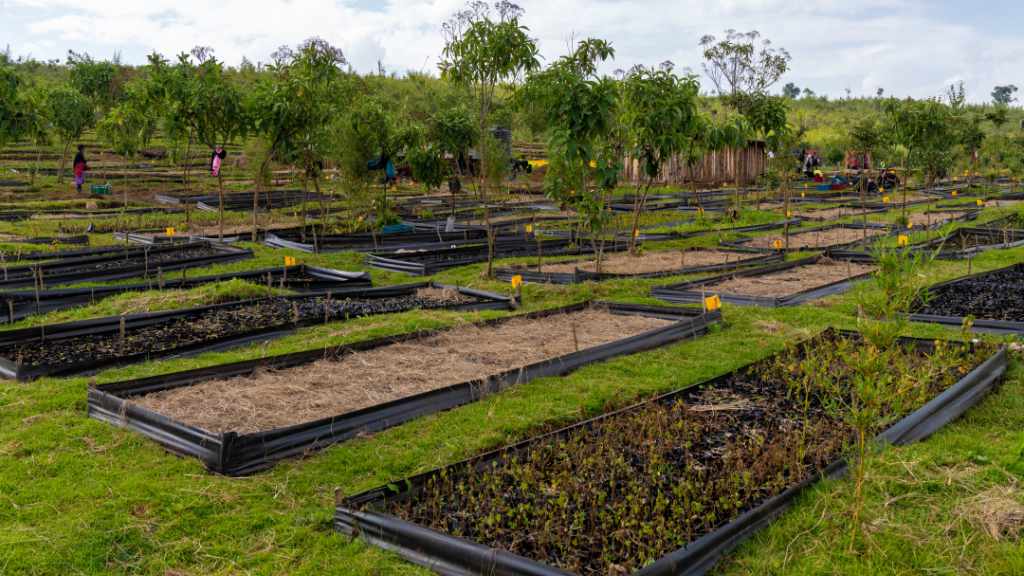
Technical Approach
During its active period (2020-2024), the Mau Forest project demonstrated effective landscape-scale restoration approaches that inform Eden’s current carbon-eligible work. Key restoration methods tested included:
• Applied nucleation to accelerate natural forest recovery
• Strategic mixing of early and late succession indigenous trees
• Hedgerow planting to establish connectivity between fragments
• Enhanced natural regeneration in areas with remnant seed sources
• Indigenous tree planting in severely degraded areas
Implementation incorporated comprehensive stakeholder coordination and participatory planning that balanced traditional knowledge with scientific expertise. A 100-hectare demonstration area was established to test and document four distinct restoration techniques, while broader implementation occurred across the landscape.
The project developed and tested an open-access monitoring framework tracking forest connectivity, wildlife corridor functionality, water recharge patterns, and restoration progress. These methodologies and lessons learned continue to inform Eden’s approach to carbon project development in similar Afromontane forest landscapes.
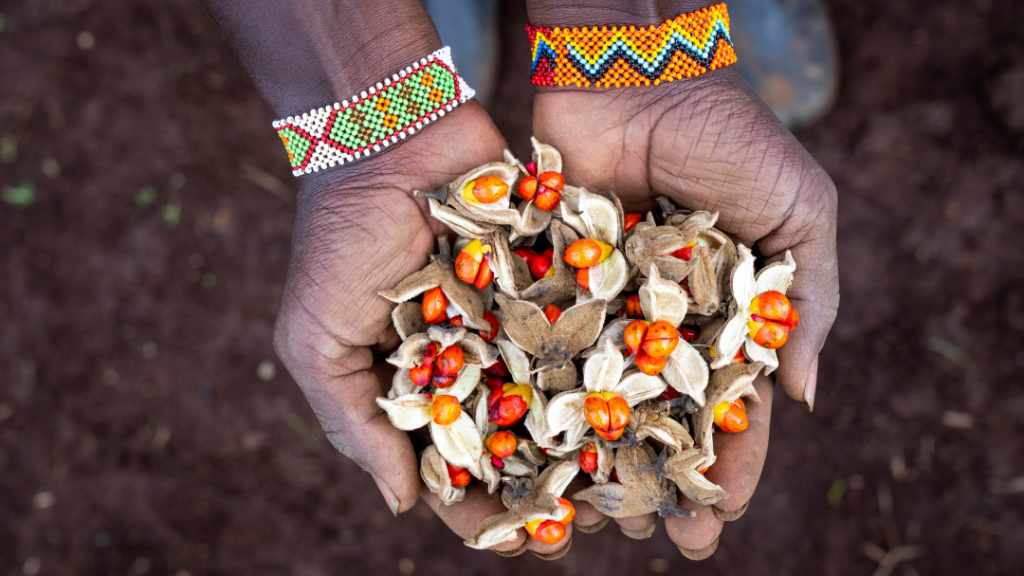
Progress and Impact
The Mau Forest Complex Restoration Project (2020-2024) demonstrated Eden’s capacity for large-scale landscape restoration before transitioning to carbon-eligible projects. During implementation, Eden established four nurseries with 4.8M trees/year capacity, built strong partnerships with Community Forest Associations, and developed effective coordination frameworks among government agencies.
Key accomplishments included planting millions of indigenous trees, participating in TerraFund for AFR100, and creating stakeholder engagement protocols for complex landscapes. The project addressed restoration within Africa’s largest closed canopy forest ecosystem, spanning 370,000 hectares and supporting critical water resources for over 5 million people.
While implementation has concluded, this work established valuable restoration methodologies, community relationships, and infrastructure that inform Eden’s current carbon project development. The experience gained in the Mau landscape continues to shape our approach to stakeholder coordination and large-scale forest restoration.
